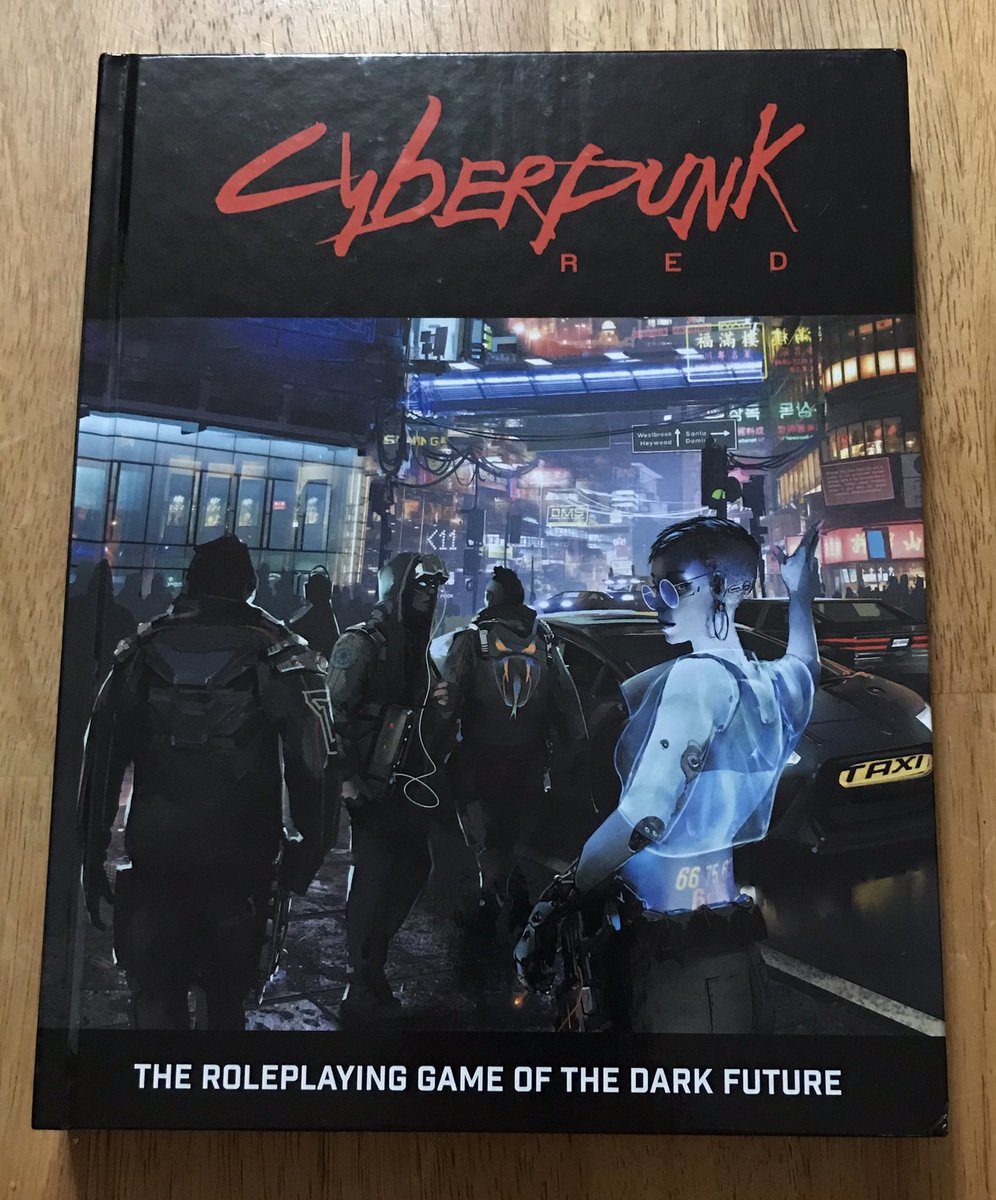
When we first published the Cyberpunk RED Jumpstart Kit, the idea of a "scarcity economy" due problems with the global shipping infrastructure generated a lot of discussion. Some gamers had trouble wrapping their heads around the idea. 1/
Nearly two years later, we're seeing some of the economic ideas Mike laid out in Cyberpunk RED hitting us hard. While we're mostly past the "I can't find toilet paper stage", grocery stores in the United States till have a large number of "bald patches" on their shelves. 2/
Due to a combination of trade wars, Brexit, a pandemic, and a shipping container shortage we've seen the loading, shipping, and unloading of cargo (never an efficient system to begin with) slow to a crawl. 3/
This ripples out through the entire economy. To make books, for example, you have to have paper. To make paper, you need wood pulp. 4/
If the wood pulp can't get to the paper mills and the paper can't get to the printers, the printers have to make decisions: make fewer books, make less money off each book (which are already under priced), or raise the prices of books (which could lead to fewer book sales). 5/
This can get even more intense when you look at complex items like vehicles or smartphones or gaming consoles. You need parts from around the world, made out of raw materials from around the world. 6/
Why is there a PS5 shortage? Honestly, Sony would love to sell you one! But shipping problems mean fewer raw materials reach component manufacturers and fewer components reach the factories making PS5s. 7/
On top of all that? Look at the Suez Canal right now. ONE SHIP is blocking access through one of the world's most important waterways, setting back shipping for days. 8/
Ships are hard/expensive to move when they get stuck. They're even harder to move when they flounder or run aground or sink in the shallows. There are above water shipwrecks all over the world that have been there for decades, the hulls just rusting away. 9/
Now, imagine a world where a global war between two ocean-based megacorporations ran rampant. Where these massive shipping containers were hulled while in port or while traveling through canals. 10/
We're still finding mines in the oceans from WW2. Imagine a world where there are still roaming mines, driven around by corrupted psuedo-AIs that consider any ship a target. 11/
Imagine a world where the greatest repository of data ever created was embraced to the extreme and then corrupted by a massive data virus, meaning no info from it could be trusted. 12/
Imagine a world where the climate crisis is several decades ahead of our own, so super storms are a near daily occurrence and where pollution laws, as weak as they are here, are non-existent so the ocean is filled with giant, propeller fouling garbage patches. 13/
And now you're starting to get an idea of why, decades after the end of the 4th Corporate War, Night City is still experiencing a scarcity economy. What we've gone through in the past year is just a taste of what daily life is like in Night City. 14/14
• • •
Missing some Tweet in this thread? You can try to
force a refresh







